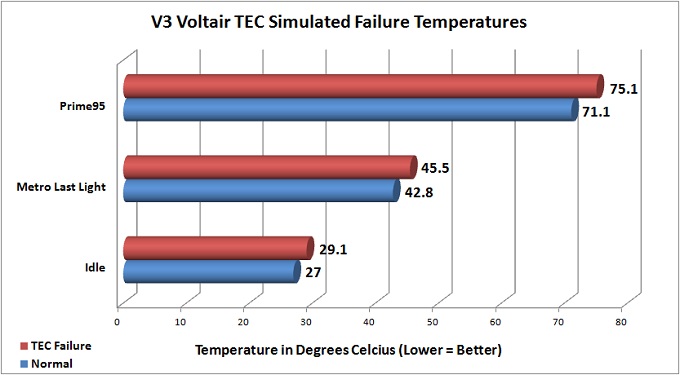V3 Components Voltair TEC CPU Cooler Review
TEC Power Failure What Happens
Since the saturation of TEC tech isn’t very large, I’m sure many of you want to know what happens if the TEC plate fails to work or for whatever reason stops getting power. Lucky for you, we were just as curious! Does it really bog down the performance of the cooler or does it just act like a normal HSF? Our hunch was that the cooler would just act like a normal HSF, but we also reached out to V3 to get their thoughts before getting a chance to perform this, and this is what they had to say:
If the TEC stops working, which is unlikely since it is solid state, the cooler is designed to continue operating at a ‘reduced’ capacity. If you look at the design, you can see how it is basically two heatsinks on top of each other with a TEC in-between. If the TEC stopped working, that first bottom heatsink will continue working just like any other air cooler. Of course you would not be getting the benefit of the TEC or the secondary heatsink, but you also won’t have a fried CPU.
In running any tests, we chose to stick with the stock turbo frequency of 3.9GHz on the i7 4770k instead of putting the added stress of an overclock on a failed heatsink that just lost its prized cooling solution the TEC plate. Again, this is just a simulation of the TEC plate failing and this was achieved by simply unhooking the Molex power connector.
In the chart below, you will find the failed TEC plate results in RED while the fully functioning cooler results are in BLUE. We also only chose to show off idle, Metro Last Light, and Prime95 to help you get an idea of how much the TEC technology actually carries along this cooler.

Overall Results: I’m actually quite impressed with how much a little electricity affects the cooling potential of this cooler. With an approximate average difference of 3 degrees Celsius, you can see how the Thermoelectric Cooling technology makes this cooler shine.
